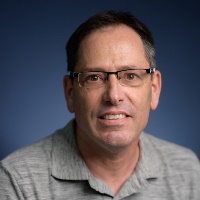BGU researchers have achieved a breakthrough in a new field of synthetic chemistry. Department of Chemistry Prof. Gonen Ashkenasy (pictured below) and his team are among the first in the world to have successfully created an entirely synthetic system that mirrors the out of equilibrium state of biochemical cells. Out of equilibrium simply means that food and energy go into the cell and waste comes out. These findings were published last month in the leading journal Nature Communications.

Life is more than the sum of its constituent molecules. It is dependent on the way these molecules interact and cooperate with each other, i.e., the way they are organized in self-sustaining chemical networks. Understanding the organization underlying living systems, and, even more so, the ability to have such systems emerge and evolve spontaneously from basic starting conditions in laboratory experiments, would open up a whole new area of technology: living technology.
Why, then, is Ashkenasy's achievement so important? Because of live cells' extraordinarily precise and efficient behavior. They contain all the raw materials necessary to both maintain the cell life cycle and to replicate within the cell itself at all times. There is no need to continuously add materials from the outside. All that is needed is an energy source. Until 2015, chemists were practically limited to mimicking the static state of dead organic cells, which are completely in equilibrium with no inputs or outputs. Ashkenasy's synthetic system demonstrates that only when kept far from equilibrium can the synthetic system present features of biochemical cells. This synthetic cell mimicry is also self-replicating, a breakthrough which they reported in another Nature Communications article in 2017. This new development will have important applications in areas ranging from chemical engineering and smart materials to synthetic biology and medicine. It will also significantly increase our understanding of the origin and early evolution of life, representing a major scientific advance.
In addition to their efficiency, they can be used to create biodegradable zero waste electronic parts such as conductors and diodes. Since they do not contain plastic or metals, they can be easily broken down into their natural components at the end of their lifespan. There are also intriguing applications in the fields of sensing and diagnostics. A synthetic cell can be programmed to seek out and bind to certain materials, whether they can be found in our blood or in a field. Once the cell binds and recognizes its partner, it can then begin to replicate rapidly and become a location marker. While an individual cell would not show up on scans, thousands of them pinpoint the exact location. Prof. Ashkenasy is world-renowned in his field. He has received several grants from Israeli, European and American agencies, was vice-chair of two major COST Action initiatives of the EU, each one hosting almost 100 research groups, and was recently invited to create a subset of the Gordon Research Conferences focusing on his field. The research is supported by the Israel Science Foundation.
Media Coverage:
JPost
|